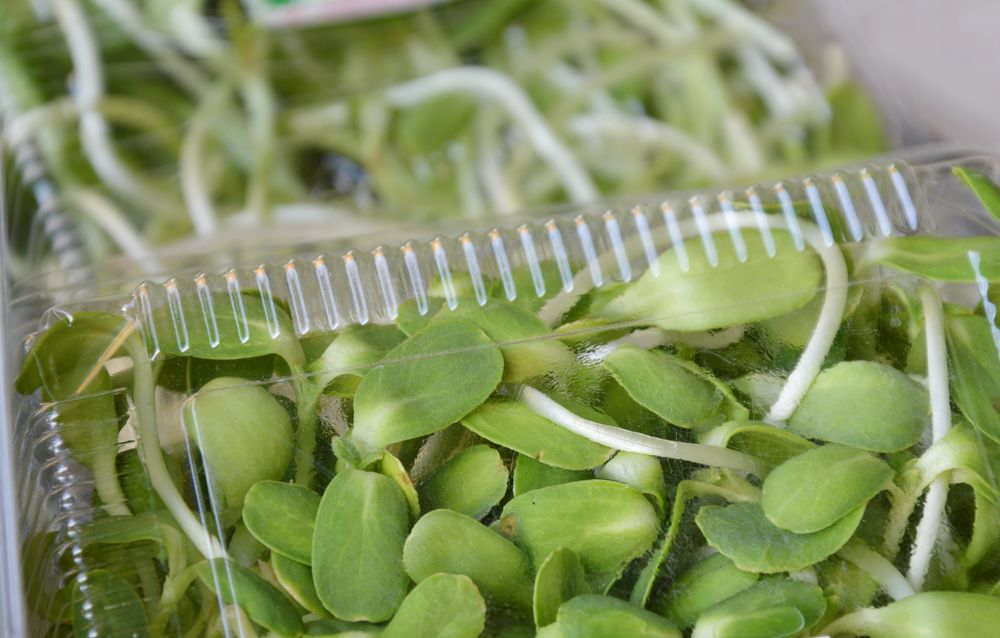 Nanotechnologies have markedly improved the properties of materials. By 2020, their turnover will probably account for at least 3,000 billion dollars of the world economy. Considering this global trend, it can be expected that nanotechnologies will provide the main thrust to the development of new packaging materials.
Nanotechnologies have markedly improved the properties of materials. By 2020, their turnover will probably account for at least 3,000 billion dollars of the world economy. Considering this global trend, it can be expected that nanotechnologies will provide the main thrust to the development of new packaging materials.
In this context, Ahmed M. Youssef et al., of the National Research Center of Giza (Egypt), have written an article (Carbohydrate Polymers 193, 2018, 19), which offers an overview on bio-nanocomposites materials for food packaging. As is known, the term “nanotechnology” refers to the preparation and characterization of structures, devices or materials whose dimensions are less than 100 nm. When the size of a material is below this threshold, the material properties are significantly different from those of the same material on a larger scale.
As a result of their nanometric size, nanocomposite materials have an extremely high surface area to volume ratio and their surface reactivity is very high. Therefore, by adding them – even in very small quantities – to compatible polymers, nanomaterials cause enormous property changes. If bio-polymers are used as a matrix, bio-nanocomposite materials with excellent barrier, mechanical, heat resistance and biodegradability properties can be obtained, providing even higher performances than pure bio-polymers.
Therefore, nanomaterials lead to important improvements in the field of food packaging, also for more innovative applications of smart and active materials. Currently, the most common bio-nanocomposite materials are biopolymers containing nanofillers based on clay, lignin, cellulose, polysaccharides and silver nanoparticles, as described below.
- Clay bio-nanocomposites. Recently, the possibility of obtaining a very homogeneous bio-nanocomposite with polyamide 6 and a very low percentage (4 % by weight) of an organically-modified nanoclay was identified. This new material has shown better properties compared to pure polymer in terms of mechanical resistance, barrier properties and thermal stability. Other promising bio-nanocomposite materials contain nanoclays with a layered structure, as for example montmorillonite and kaolinite. These composites have very high barrier properties due to the presence of clay layers which create a very tortuous diffusive path and therefore can effectively stop the path of gaseous molecules.
- Lignin bio-nanocomposites. The preparation of composites containing polyvinyl alcohol with small quantities of modified lignin nanoparticles has been described, whereby the particles are homogeneously distributed in the polymer matrix. It was seen that nanolignin, even at low concentrations, significantly influences the properties of the final composite. In particular, nano-sized lignin particles were seen to be were more active than the pure lignin “traditional” in increasing the thermal properties of polyvinyl alcohol, with an improvement of the heat resistance of the final material obtained.
-
 Cellulose bio-nanocomposites These materials are becoming increasingly popular due to the growing awareness of the environmental sustainability of cellulose. Particularly, new bio-nanocomposites were prepared based on polyvinyl alcohol with cellulose nano-crystals extracted from widely-traded micro-crystalline cellulose. These materials are transparent thanks to the excellent dispersion of cellulose nanocrystals in the polymeric matrix. Moreover, an improvement of the barrier and, in general, of migration properties were observed thanks to the addition of cellulose nanocrystals to polyvinyl alcohol. Even cellulose in form of nanofibers was used as a polylactic filler. Improved oxygen barrier properties were obtained thanks to the fact that the thick mesh of cellulose nanofibers prevents the passage of the gas.
Cellulose bio-nanocomposites These materials are becoming increasingly popular due to the growing awareness of the environmental sustainability of cellulose. Particularly, new bio-nanocomposites were prepared based on polyvinyl alcohol with cellulose nano-crystals extracted from widely-traded micro-crystalline cellulose. These materials are transparent thanks to the excellent dispersion of cellulose nanocrystals in the polymeric matrix. Moreover, an improvement of the barrier and, in general, of migration properties were observed thanks to the addition of cellulose nanocrystals to polyvinyl alcohol. Even cellulose in form of nanofibers was used as a polylactic filler. Improved oxygen barrier properties were obtained thanks to the fact that the thick mesh of cellulose nanofibers prevents the passage of the gas.
• Polysaccharide nanocomposites. Polysaccharides such as chitosan, carboxymethyl cellulose and starch can be added to polymers to improve their biodegradability and non-toxicity. Unfortunately though, polysaccharides have some negative properties for food packaging, that is poor mechanical properties and low water resistance. Therefore, polysaccharides are used as nanofillers in very low quantities, in order to improve environmental compatibility without compromising the functional properties of materials. - Silver nanoparticle bio-nanocomposite materials. Antimicrobial polymeric bio-nanocomposites are very useful for inhibiting the growth of polluting micro-organisms in packaging, thus ensuring longer shelf life of food products and improved food safety. In particular, by adding silver nanoparticles to polymers, it is possible to produce films with good mechanical, thermal and barrier properties. The transparent polymeric matrix remains unchanged. More encouraging applications for these new materials were obtained for the packaging of meat. Further developments in bioactive materials can lead to fine-tuning properties that can be very interesting for the packaging industry. For example, nanosensors will be able to indicate to consumers if a food is inedible, because they will indicate the level of exposure to harmful conditions, such as excessive oxygen levels, or temperatures that are unsuitable for food preservation, or they may point out environmental or chemical changes during storage. This means that in future, packaging materials based on bio-nanocomposites will be increasingly important, especially in the area of biodegradable, heat-resistant, antimicrobial and transparent packaging films. Among the nanomaterials described here, the most promising are those with layered clay, such as montmorillonite and kaolinite, and those with silver nanoparticles. Certainly, the use of these materials should be further investigated, taking into consideration performance, toxicity, etc. For instance, in future, additional functions to those described in this article should be highlighted. Moreover, preparation processes must be improved and, in this context, the compatibility between nanomaterials and polymers will represent the greatest challenge.
References. Ahmed M. Youssef et al., Carbohydrate Polymers193, 2018, 19



